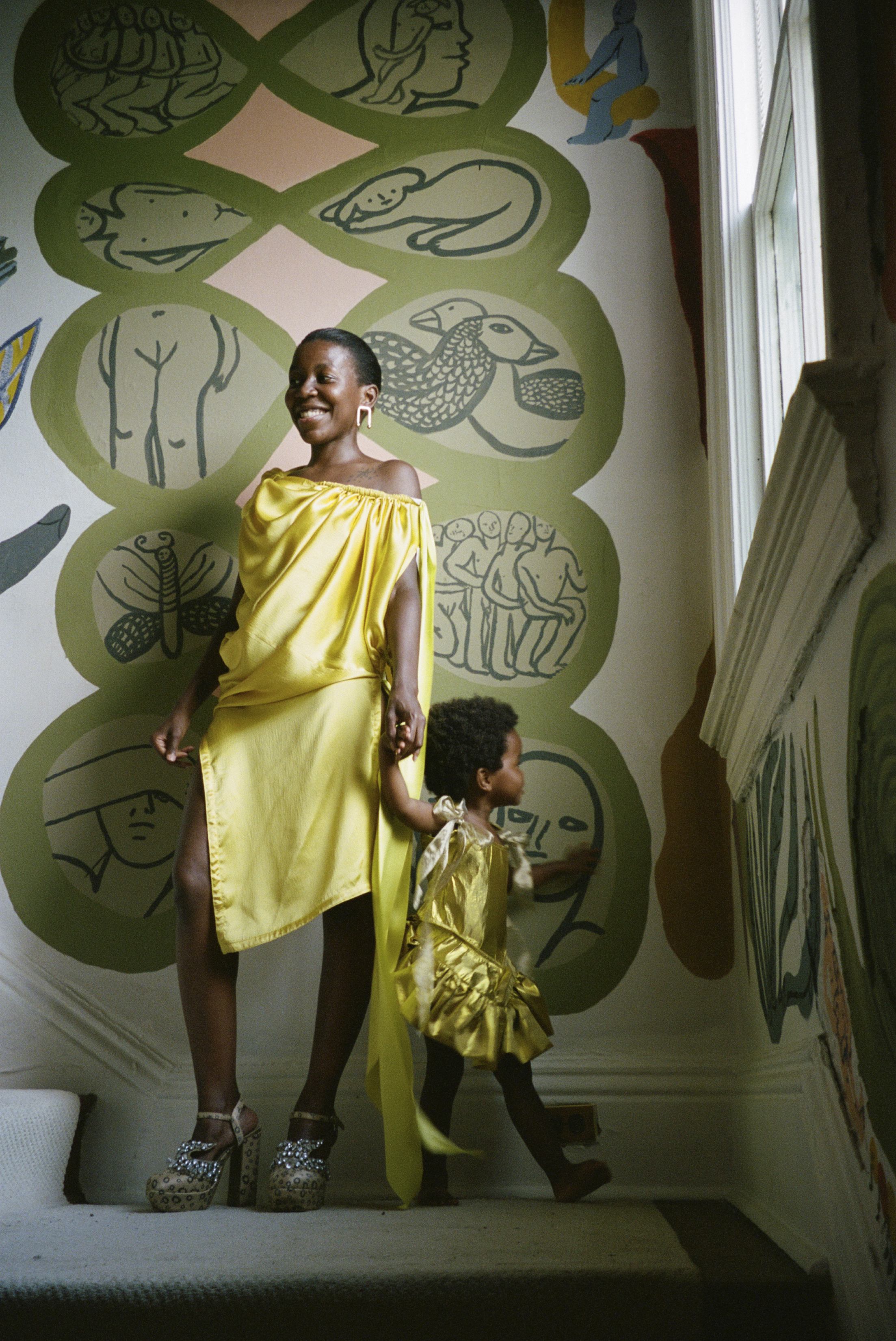How does one so tenderly capture the immensity of maternal love? You start at home like Kimberly Goedhart did and you never stop trying.
Blossoming from the desire to give a second life to the sensorial richness of her visits home to India, Goedhart’s work is rooted in intimacy and a tangible sense of longing. Photographing Hleziphansi Zita and her two daughters, Goedhart’s portraits feel intuitively familiar while being utterly arresting. Unadorned by sleight of hand trickery, the considered images reflect the quiet confidence of the young family.
We caught up with Goedhart to talk about the healing power of creative work and the boon of having pregnant friends.
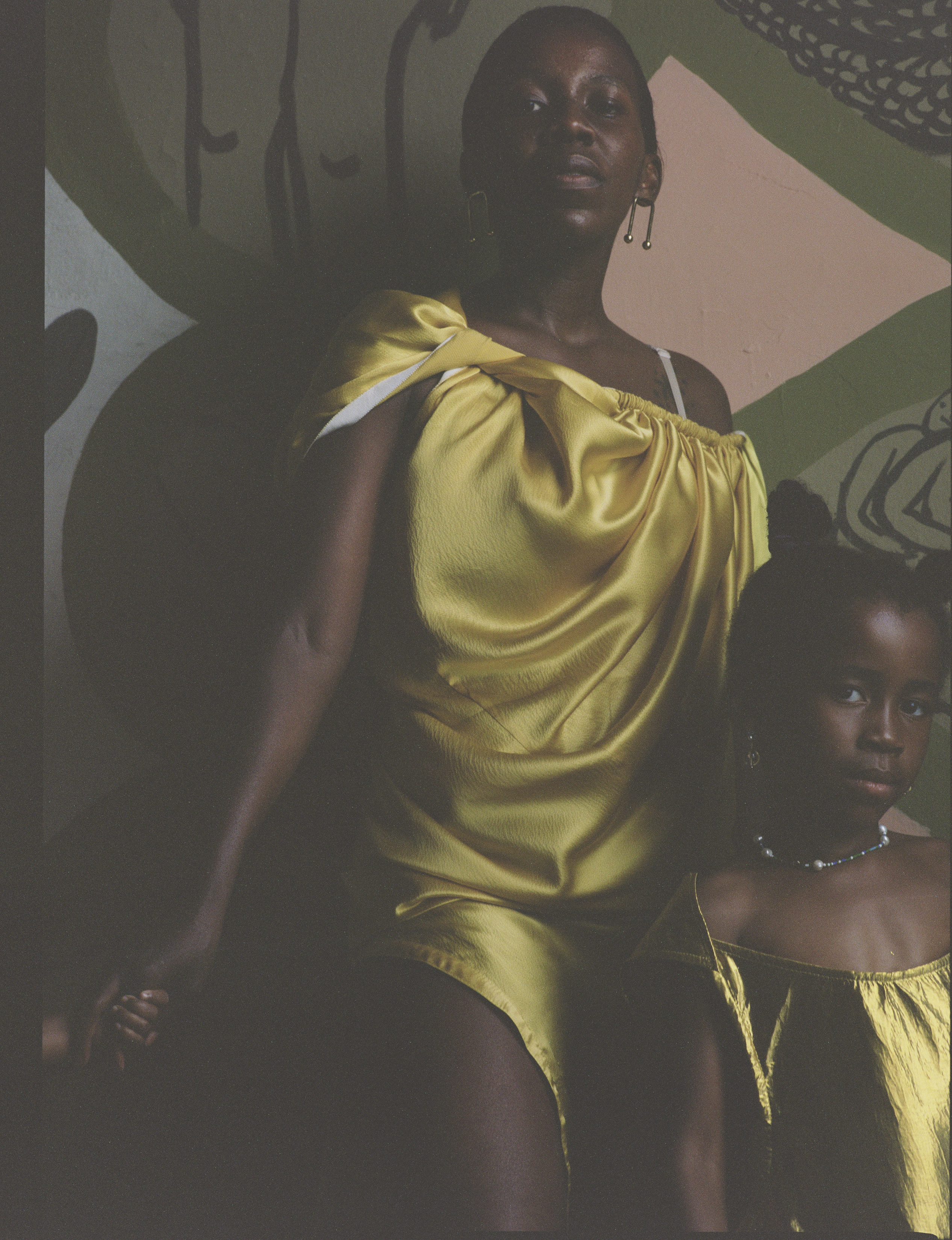
How did you first get into photography?
I first got into photography when visiting family with my mother in India. I had a digital camera and I must have taken 1000’s of photos. Visits have always been so sensorial and instilled a deep feeling of home, yet they are far and few between, so documenting became very important for me.
What are the main themes in your work?
Matriarchy and generational change. Beauty is so subjective, it’s a very instinctive feeling. I’m often interested in subjects that are rooted in mixed cultural identities.
What drew you to this portrayal of motherhood?
I come from a very matriarchal family. I feel blessed to witness close friends go through pregnancy and grow into mothers, so I just want to honour that. After all, how did we get here?
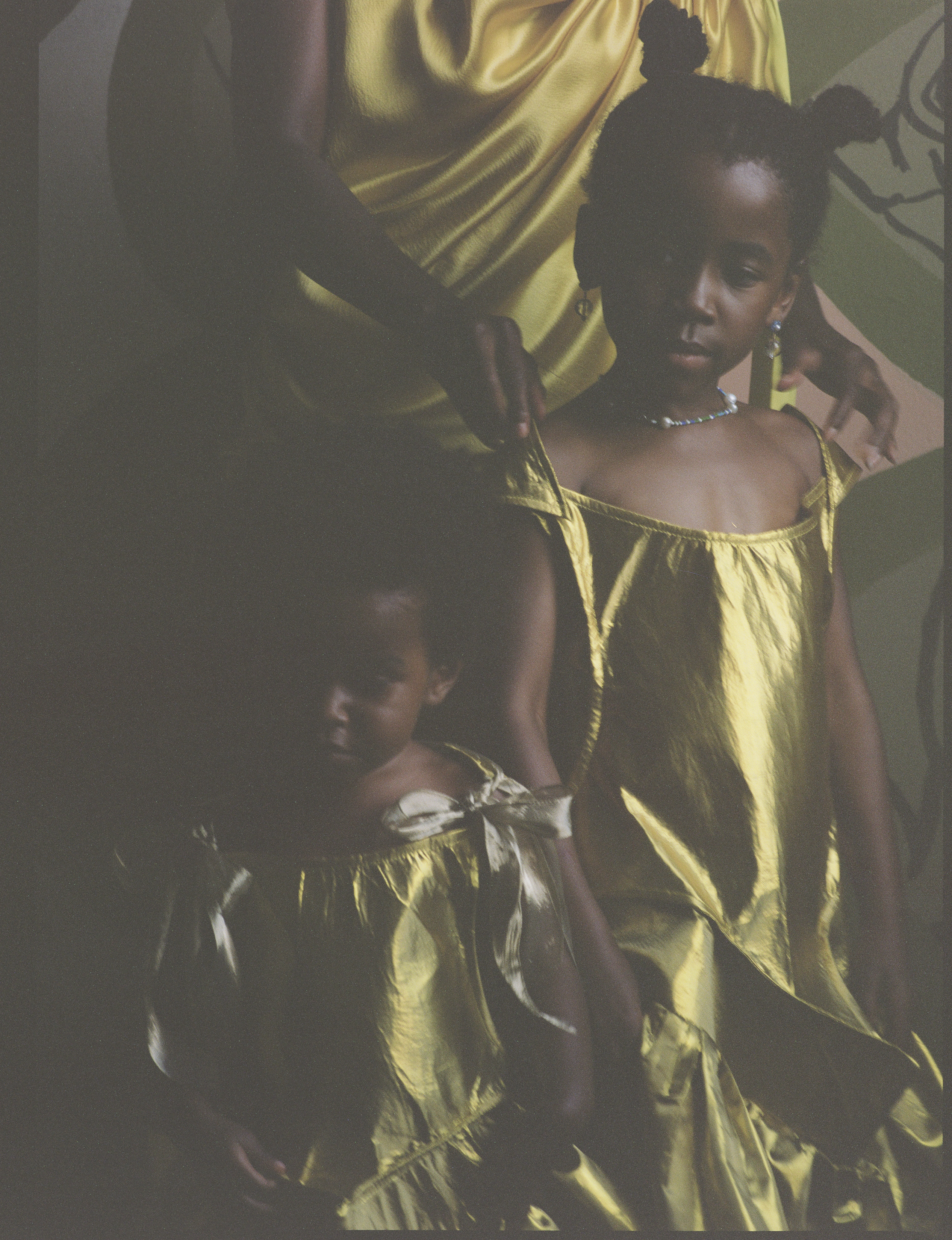
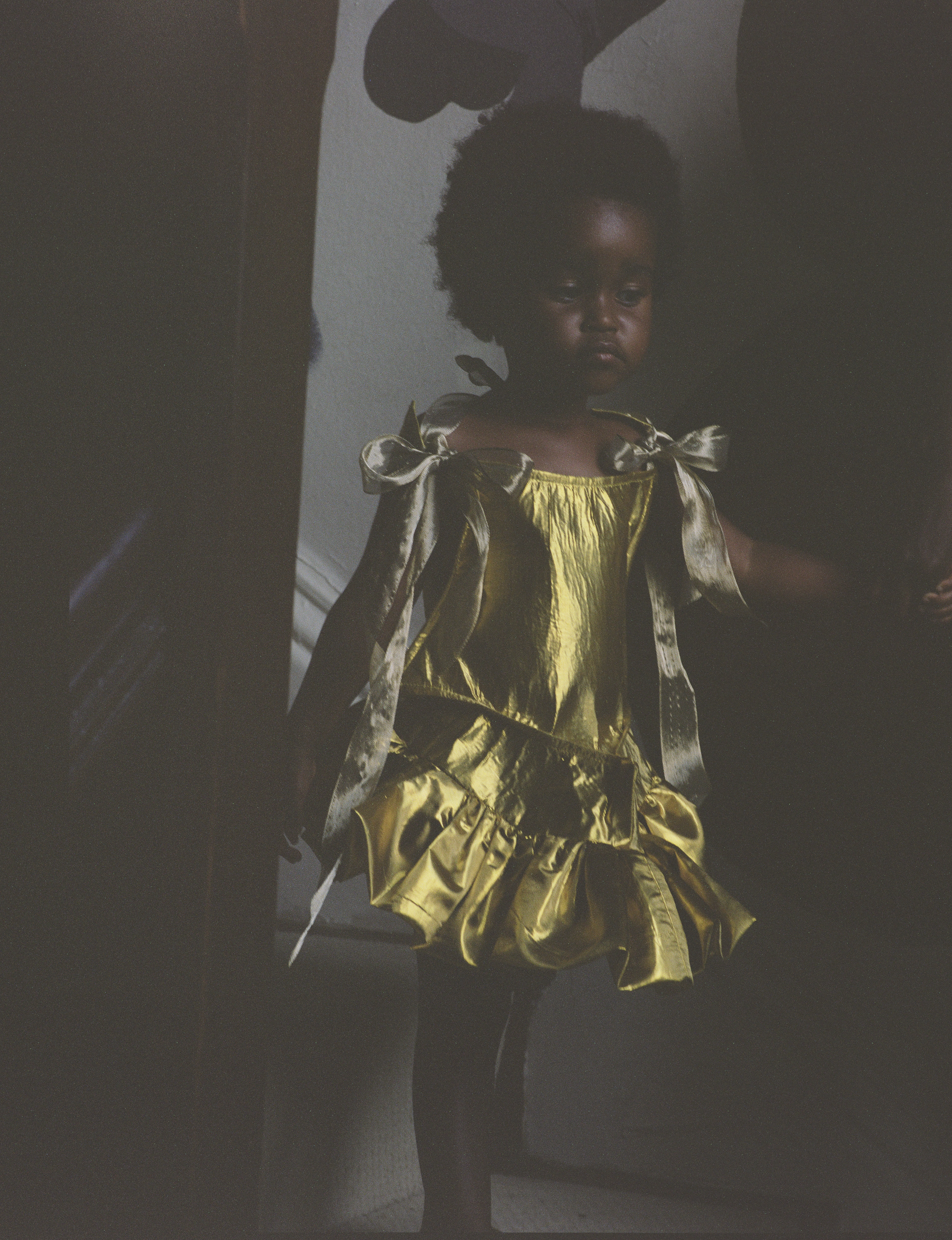
How did you get to know Hleziphansi Zita, what drew you to her work?
I met Lezi through a mutual friend, I reached out to shoot for Minority Report, an art workshop my friend Danny Castaneda was creating for Youth of Color in the NYC area. I was already familiar with Lezi’s jewelry brand, Nandi Naya, which is named after her eldest daughter. I admired her artistry and was attracted to the sculptural and deeply referential nature of the work.
What made you want to capture their family?
Since we’ve met, we’ve collaborated in a few different ways—I hope to capture their growth as a unit over time. You really feel the power in their presence. My friend close friend Ky Luu, who designed the dresses for the shoot and I spoke at length about the family ethos, we drafted some concepts, and things blossomed from there.
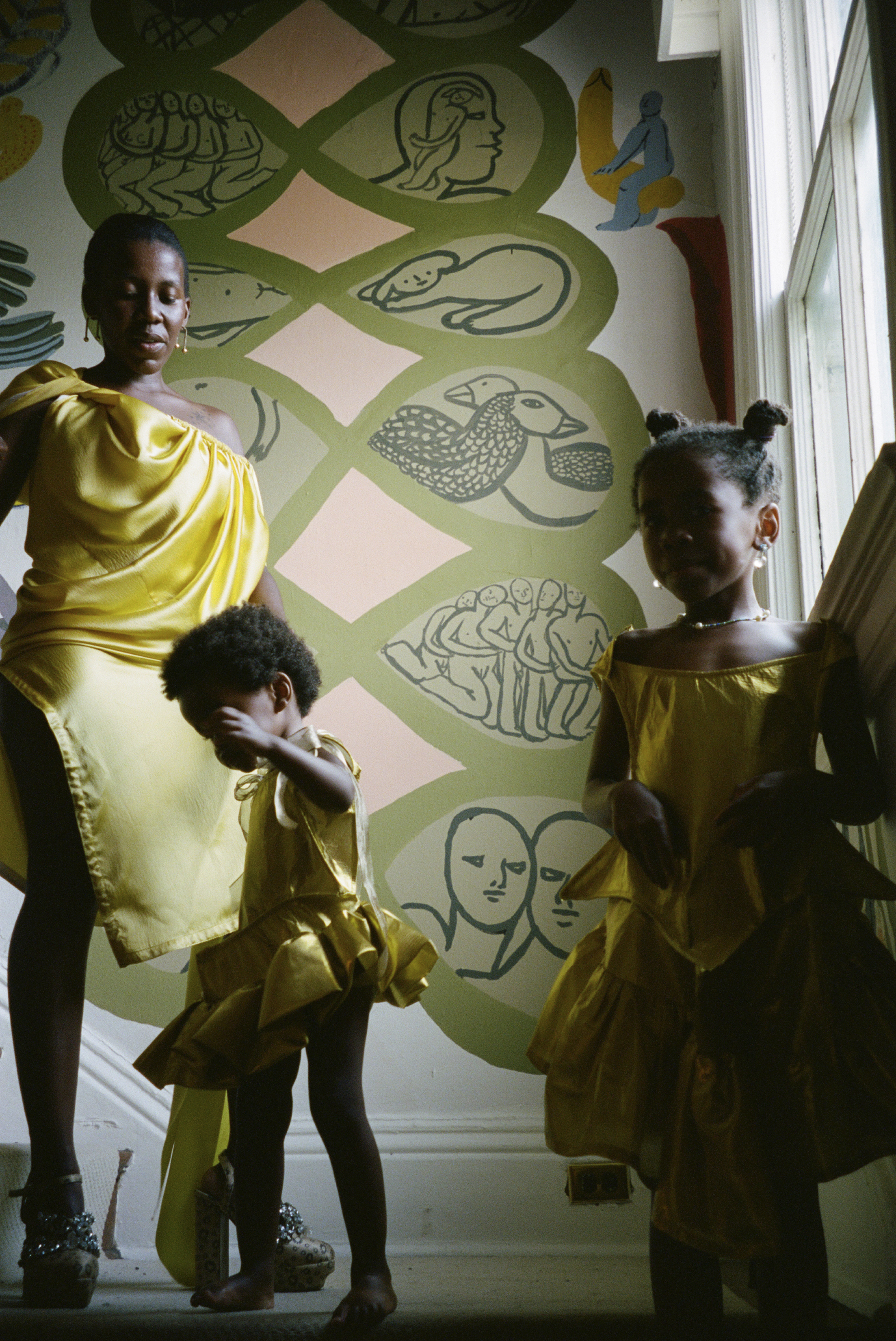
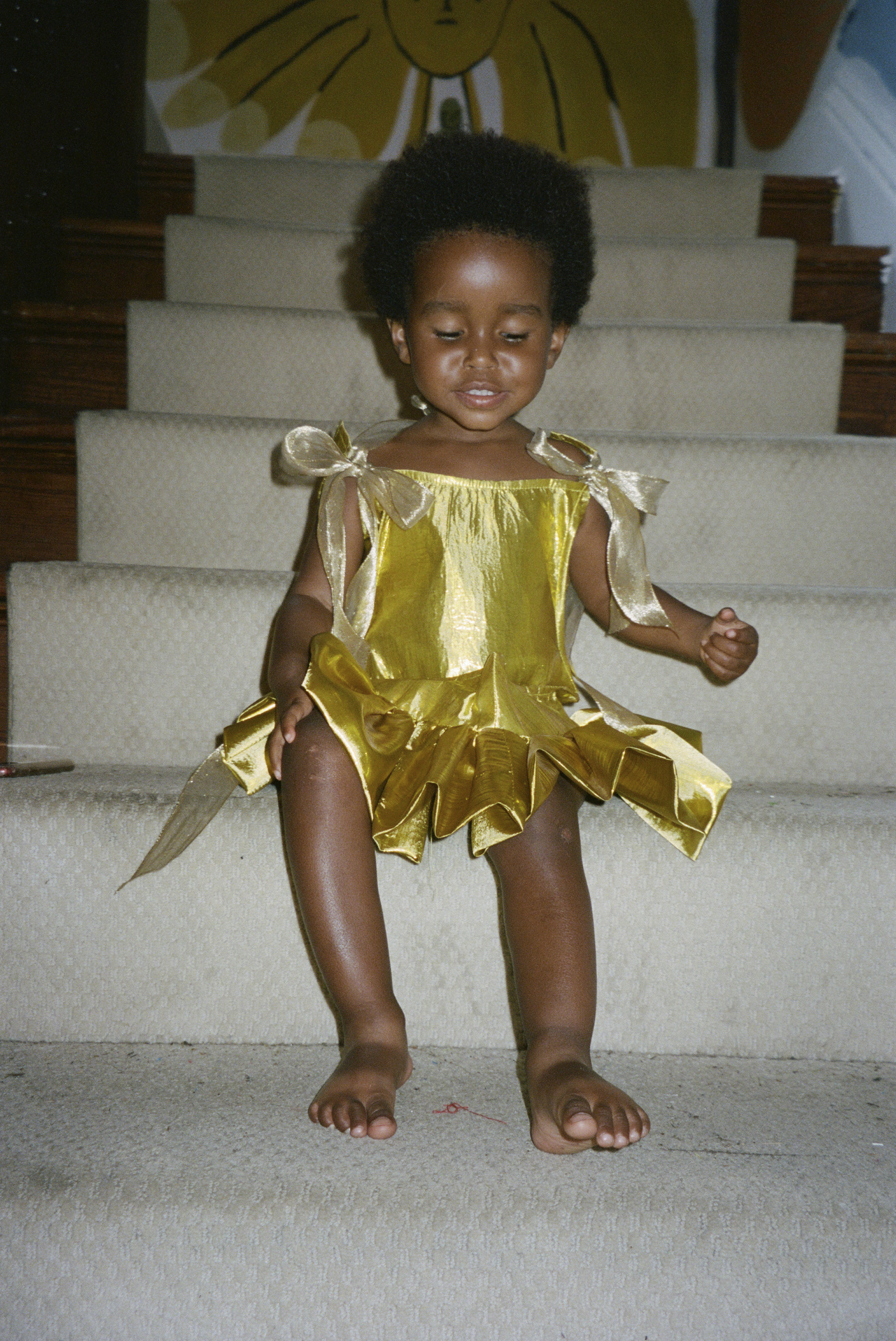
The images tell a story of cross-generational femininity—what did you notice about the dynamic between the women and girls?
I really continue to be blown away by Lezi’s parenting style and family dynamic, especially coming from a family that was more traditional and disciplined. There’s a deep feeling of unconditional love and being in tune with each other’s needs. The result is two incredibly bright, fearless, independent children.
Is there a specific message you think you, and Zita in her designs, would like to communicate to women, especially women of colour?
I hope the euphoric family state translates and can be celebrated by anyone who views these images. One thing that has been very healing working together, is that Lezi’s very rooted in her South African identity as a first-generation American and quick to reject western standards that don’t serve her or her family. I think that’s a very important message for women of colour.
